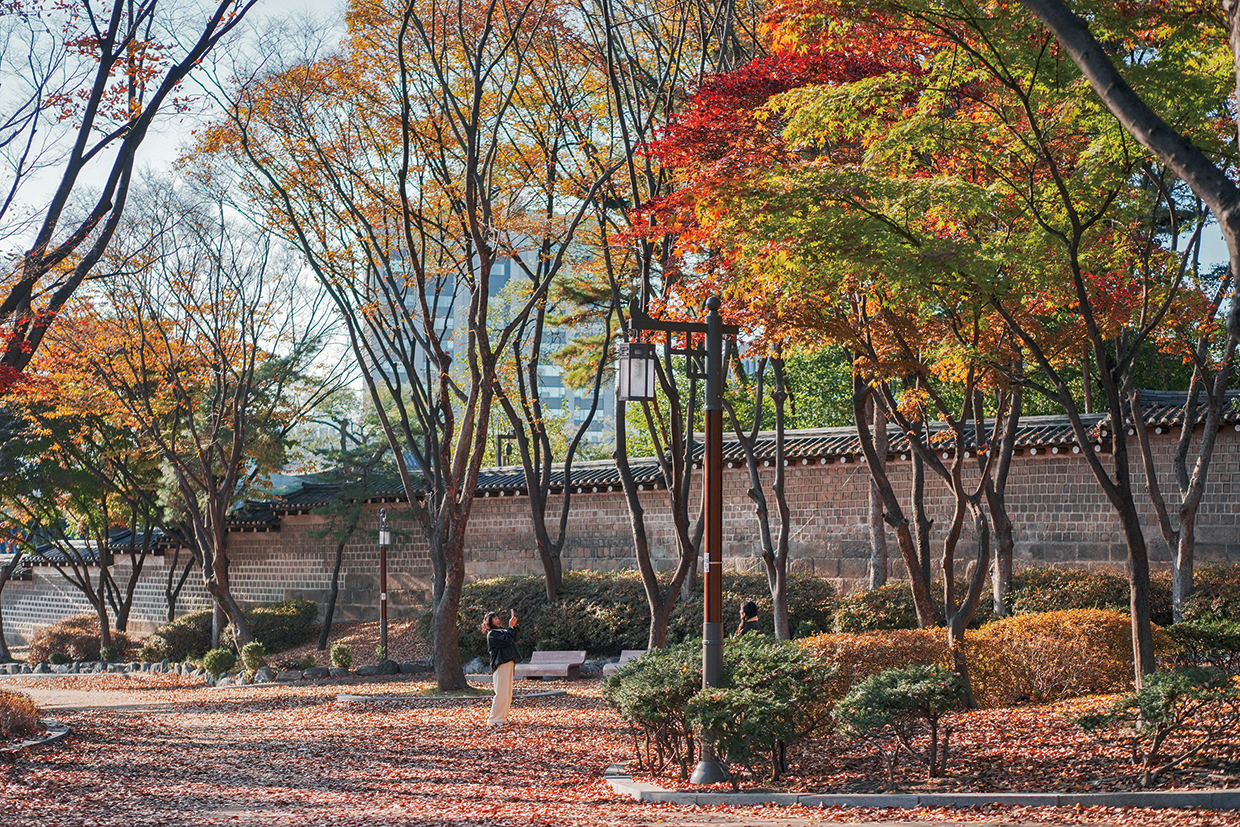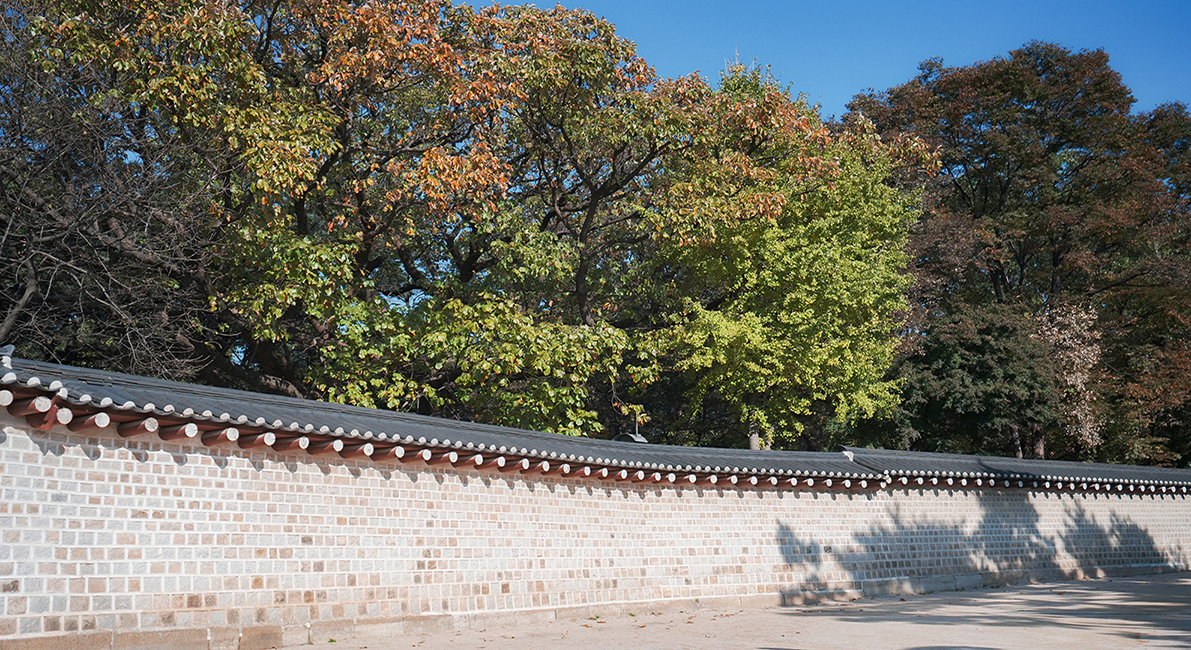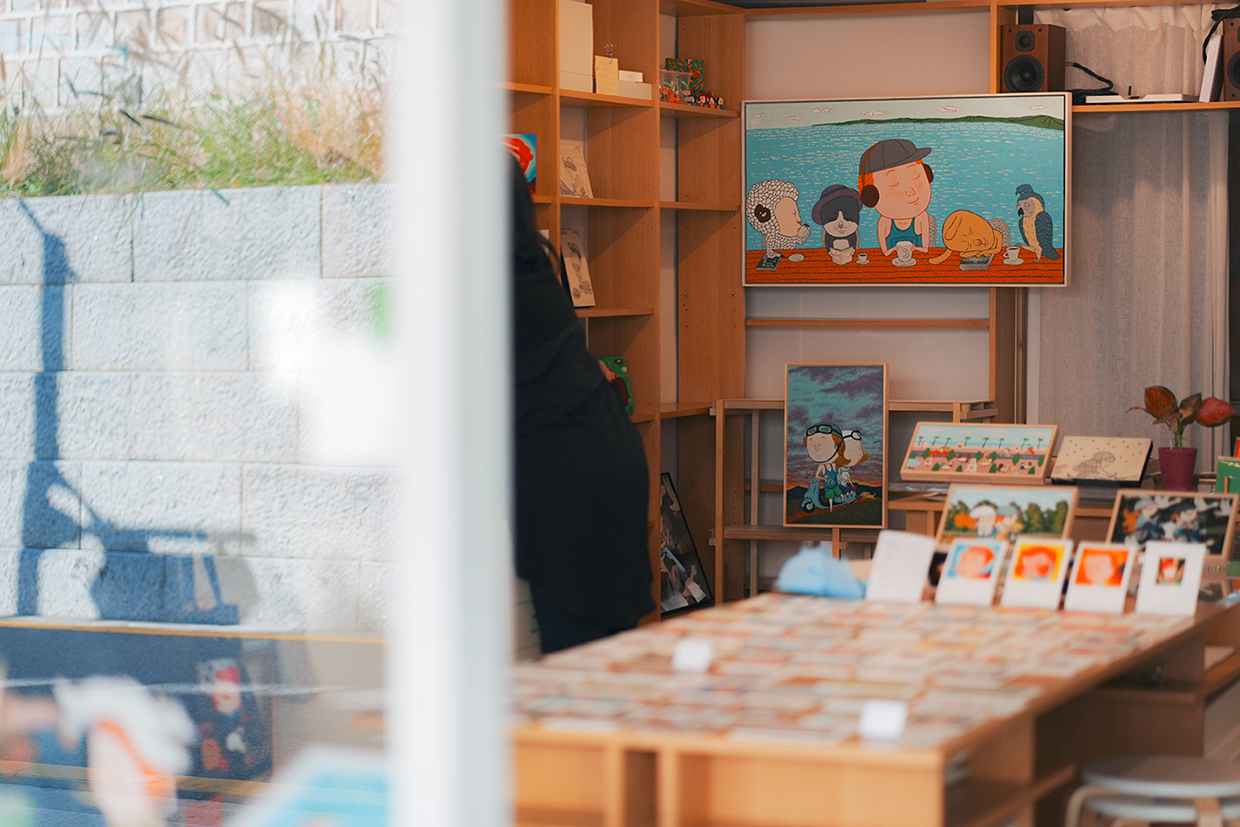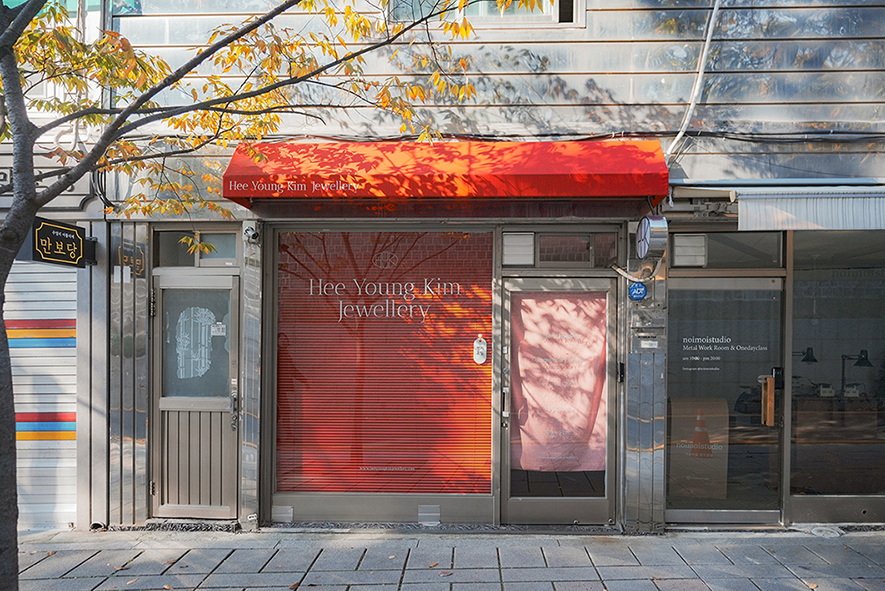SEOSULLA-GIL
![shutterstock_2059390754 [변환됨]](https://en.ibtravel.co.kr/wp-content/uploads/2024/04/shutterstock_2059390754-변환됨-1.png)
Enjoy a quiet walk along the stone-walled street that connects the present to the past, following the footsteps of the patrolman.
Seosulla-gil Street, Where Patrolmen Did Their Rounds during the Joseon Period
Despite its location in the heart of Jongno, Seoul, Sulla Street is unknown even to the residents of Seoul and offers a tranquil landscape. At the back of busy Jongno 3-ga, Seosulla-gil Street, where patrolmen used to make rounds in the Joseon period, continues along the ancient walls of Jongmyo Shrine where the evidence of time is present. The back of Jongno Jewelry Alley, newly occupied by cafés and restaurants, is becoming a hot place nowadays. Enjoy a quiet walk along the stone-walled street that connects the present to the past, following the footsteps of the patrolman.



Road along the West Wall of Jongmyo Shrine
In the bustling heart of Jongno, there’s a remarkably serene area where time seems to have come to a standstill. The area consists of Jongmyo Shrine, where ancestral tablets of the kings of the Joseon Dynasty are set up, and Seosulla-gil Street, which continues along the shrine’s west wall. With Jongmyo Shrine at the center, the road to the east is called Dongsulla-gil Street and the road to the west is called Seosulla-gil Street, both originating from Sulla, the patrolling system of patrolmen in the Joseon Dynasty.


This historic walkway is not very well known because Kwonnong-dong and Bongik-dong of Jongno-gu, where the road passes by, formed an area with a government office and fields that provided vegetables to the palace in the Joseon era, and the residents of the area were the palace staffs, such as eunuchs and maids. However, after the Joseon Dynasty had fallen, the neighborhood deteriorated while going through the Japanese occupation. Around 1995, nearby areas were developed for city maintenance and the street was rebuilt, becoming the current Seosulla-gil Street.
Craftsmen and Cafés Gathered under Quaint Old Walls
Seosulla-gil stretches from 45-4 Jongno 3-ga to 26 Gwonnong-dong. At first, the newly established street did not receive much attention and workshops of jewelers in Jongno, lapidary workshops and small jewelry shops filled the street.


However, since 2010, jewelry artists started to gather one after another and young entrepreneurs settled down in the area. After the craft workshops were built up and the street had gradually developed, more people began to visit, and many charmingly decorated restaurants and cafés have opened.
A Quaintness That Goes Together with Low Buildings, Floor-to-Ceiling Windows and Stone Walls
Although close to Anguk Station and Jongno 3-ga Station, Seosulla-gil Street presents a world far from the hustle and bustle. Along this tranquil 1 kilometer-long street connected to the high walls protecting Jongmyo Shrine, the studios of young jewelry designers showcase exquisite works created with their fresh ideas. Cafés and restaurants are never higher than two stories because of a height limit, but the low height has made them blend harmoniously with the stone walled street.

Each store maintains the charm of the street through an interior that emphasizes the natural beauty of the materials such as wood, bricks and roof tiles. Since the street is facing the stone wall, most of the stores feature floor-to-ceiling windows in front to ensure their patrons fully enjoy the charm of the walls of Jongmyo Shrine and the tranquil atmosphere of the street.

Address│Gwonnong-dong, Jongno-gu, Seoul
Way to go│5-minute walk from Exit 7 of Jongno 3-ga Station, Seoul Subway Line 1 or 3
NEARBY TOURIST ATTRACTIONS

Café Sasa
This hanok café serves new interpretations of traditional desserts and drinks. Their signature menu is the Sasa Set Menu, which includes non-alcoholic makgeolli (unrefined rice wine) and oven-baked garaetteok (rice cake stick).
Solbangul Bakery
This hanok bakery serves freshly baked
breads and buns every morning. They
use organic flour, and popular menus
include Ssal Ssukddeokssukddeok
(rice and mugwort rice cake), Cheese
Cassava, and Banana Pudding.
Heritage Club
This is a café + bar that serves coffee during day and whiskey at night. The glass ceiling is meant to provide a “comfortable rest in a courtyard.” The Apple Cinnamon Latte made with their homemade apple syrup is a must-try, and after sundown, you can relax with a whiskey on the rocks.
Daramgee
This Korean-style pub serves modern reinterpretations of traditional alcoholic drinks like Yosae Rosé (Today’s Rosé) and Oraedoen Norae (Old Song), as well as fusion Korean dishes like Tohajeot (salted freshwater shrimp) Oil Pasta and Grilled Sundae (blood sausage).
Ida
This restaurant specializes in Korean dishes cooked using fresh seasonal ingredients, traditional Korean alcoholic drinks and natural wines. Flatfish Ceviche is a popular choice. The 2nd floor offers superb views.
Sullagil
This skate fish restaurant at the end of
Seosulla-gil has been serving diners
for nearly 30 years. Guests can try
skate in diverse ways, such as raw,
braised, and stewed, or as samhap
(skate, pork, and kimchi combo). Other
menus include gochujang gulbi (dried
yellow croaker) and nakji bokkeum
(stir-fried octopus).
TIP
The Seoul Intangible Cultural Heritage Center near Seosulla-gil is a training center for Korean traditional arts and crafts designated by the Seoul Metropolitan Government. Various traditional cultures can be seen, and foreign tourists can participate in various one-day classes, such as making traditional cocktails, making silver rings, traditional dyeing, and more.

등록된 댓글이 없습니다.
첫 댓글을 작성해주세요!